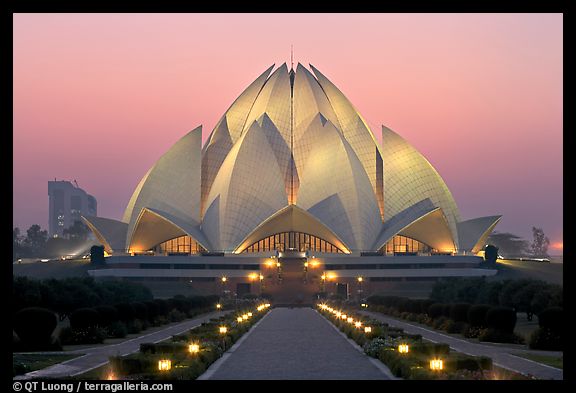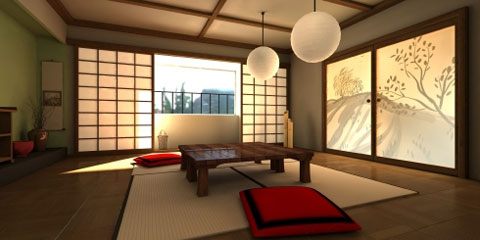[1]
(ROTH, PG 488)
The use of glass and iron in structures such as the Crystal Palace revolutionized architecture not only in architecture but also in bridges, and machinery as well. This period of time is what marked the science of building and transformed architecture into more modern and firmness buildings. Now in the present iron and glass is what most used in buildings, modern structures, sustainable design structures and basically in all architectural building types. Furniture took a different shift as iron was introduced in the 19th century being the fact that almost all chairs and tables were made of wood until the beginning of the 19th century, when new materials inspired new designs.
The use of glass and iron in structures such as the Crystal Palace revolutionized architecture not only in architecture but also in bridges, and machinery as well. This period of time is what marked the science of building and transformed architecture into more modern and firmness buildings. Now in the present iron and glass is what most used in buildings, modern structures, sustainable design structures and basically in all architectural building types. Furniture took a different shift as iron was introduced in the 19th century being the fact that almost all chairs and tables were made of wood until the beginning of the 19th century, when new materials inspired new designs.
When it was first used, iron had to be hand wrought, but with the innovations of the Industrial Revolution, iron could be molded or cast. The earliest cast iron furniture in England, made about 1823, was used in gardens, parks and cemeteries.
But it was the 1851 Crystal Palace exhibition that made cast iron popular. Benches that looked as if they had been made from branches, ferns or grapevines were made for gardens. Soon geometric patterns, leaves and scrolls were designed so the furniture resembled the Gothic or Rococo Revival styles of wooden furniture. The garden could be furnished with iron chairs, tables, benches, urns, fountains and statues.
[2]
[2]
The history of crafting and using Chinese furniture began during the first millennium AD when some Chinese decided they would be more comfortable sitting on chairs instead of squatting on the floor. Before this time, the Chinese usually conducted their lives and their business at floor level, as many Asian cultures did and some still do today.
Westerners may have used furniture before the Chinese, but once the Chinese cabinetmakers began crafting cabinets, chairs and tables they learned their craft and the intricacies of furniture making quickly. They learned to construct superbly designed and proportioned pieces without using nails, and with only a minimal use of dowels and glue. One of their greatest accomplishments are cabinets.
Westerners may have used furniture before the Chinese, but once the Chinese cabinetmakers began crafting cabinets, chairs and tables they learned their craft and the intricacies of furniture making quickly. They learned to construct superbly designed and proportioned pieces without using nails, and with only a minimal use of dowels and glue. One of their greatest accomplishments are cabinets.
(CHINESE CABINET ARTIFACT)
The architecture of a traditional Chinese home made no allowances for built-in closets. Closets are a Western innovation, and are still a rarity in Chinese societies from Hong Kong to Taipei to Beijing. Also, the Western concept of an armoire or a wardrobe cabinet did not exist in the Ming Dynasty China, as the Chinese would never hang clothes vertically inside a cupboard. Instead clothes and bed linens were laid flat inside a chest or cabinet, or hung on wooden racks. Dynastic robes were folded and stacked horizontally, rather than vertically on hangers.
(THE BAHIA LOTUS TEMPLE INDIA BUILDING)
http://luckypennies.files.wordpress.com/2007/11/lotus3.jpeg
After the British left India in 1947, Indian architecture dropped into an abyss. Indian architects, who were relegated to the role of being assistants to the British architects under the British Raj, took their own time to express their ingenuity. Perhaps, there was an identity crisis, a dilemma whether to bask in the glory of the past or move forward with times using new ideas, images and techniques. Perhaps indian architecture has influenced the design in some parts of the world.
While in other fields like art, music and culture, the distinct Indian imprint was more enhanced in the post Independence period; no such thing was discernible in the case of architecture. It is no doubt that the Indian architects were unable to achieve a transformative architecture despite the existence of great potential at the time of Indian Independence. Now in the present indian architecture has evolved just like the image represented above.
Traditional Japanese architecture has been highly affected since Japan decided to open its gates to western culture and architecture in particular. Japan made efforts to preserve traditional Japanese architecture features, but western modern architecture has taken its tole and now we see more concrete and steel and flat-roofs terraces in modern Japanese houses.
(PLACE)
The principal Islamic architectural types are: theMosque, the Tomb, the Palace and the Fort. From these four types, the vocabulary of Islamic architecture is derived and used for buildings of lesser importance such as public baths, fountains and domestic architecture. Today Middle Eastern architecture has not only influenced the design in surrounding areas but all over the world. Mosques have been built all over the U.S. territory for worshiping and gathering purposes.
(Jerusalem mosque)
http://wwwdelivery.superstock.com/WI/223/1890/PreviewComp/





[1]nice rendering and response [2]how have these eastern designs influenced the western world...images from the western world?
ReplyDelete